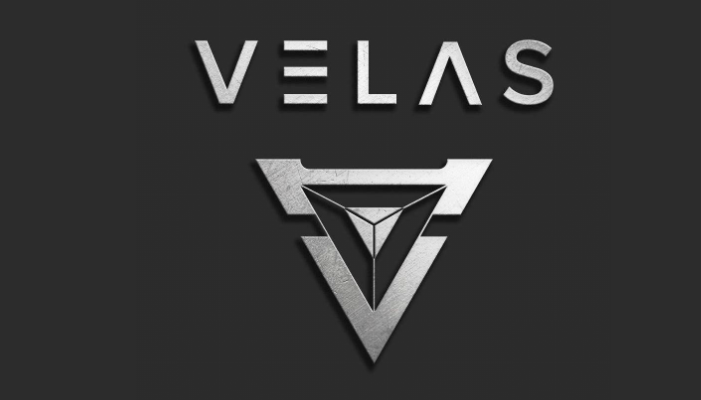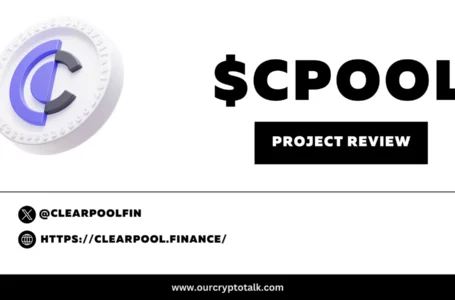
The capabilities of blockchain technology appear to be getting stronger and stronger. While the likes of Bitcoin and Ethereum are still limited to a capacity of just 7 and 15 transactions per second (t/ps), respectively, a number of alternative networks are now in the tens of thousands.
One such example of this is Switzerland-based blockchain project Velas (VLX), who claims to have the capacity to process up to 30,000 t/ps, without giving way to security or decentralization.
With that being said, we decided to explore Velas in more detail. If you’re interested to find out more about what Velas is, how the network operates, and what benefits the underlying technology provides, be sure to read our indepth guide.
What is the Concept of Velas?
Created in 2019, Virtual Expanding Learning Autonomous System, or simply ‘Velas’, is a new and exciting blockchain startup located in Switzerland. As is now quite common for new blockchain startups, Velas (VLX) was launched with the overarching objective of solving the many issues facing existing networks such as Bitcoin. In a nutshell, this centres around the challenges of scalability.
In the case of Bitcoin, for example, the network is still limited to just 7 transactions per second, at an average block confirmation time of 10 minutes. In order to improve on these stagnant performance levels, a number of developers involved with Bitcoin want to increase the transaction block size.
In doing so, this will have the desired effect of increasing scalability levels. However, those against the move argue that this will result in increased security risks, as well as a move away from true decentralization.
On the contrary, the team at Velas argue that their native blockchain protocol has the capacity to achieve upto 30,000 t/ps, while at the same time, remaining safe and secure from the threats of a 51% attack. Moreover, the Velas blockchain remains decentralized at all times.
How Does the Velas Blockchain Work?
It is important to note that the Velas (VLX) blockchain is somewhat complex to understand at first glance. As such, we’ll try and explain the fundamentals in layman terms.
First and foremost, the Velas blockchain utilizes a unique, innovative consensus mechanism that it calls ‘Artificial Intuition Delegated Proof of Stake (AIDPOS).’ The AIDPOS framework sits at the core of the Velas blockchain, insofar that it is supported by a theoretical process called ‘Artificial Intuition’.
Upon further exploration of the Artificial Intuition protocol, the phoneonom seeks to find the perfect balance between artificial software, and that of ‘Human Consciousness.’
In layman terms, this means that the underlying technology seeks to collect, identify, and assess patterns and relationships across all of the data sets that go in and through the Velas network. This allows the blockchain to operate in an ultra-efficient manner.
If and when the Artificial Intuition protocol encounters potential network inefficiencies, the network can make adjustments without needing to reconfigure the output criteria.
Schnorr Signatures
Most blockchain networks only permit a single digital signature when processing transactions. This is typically the individual with access to the respective private key. But what do you know when a wallet has multiple owners? This is where Schnorr Signatures comes in.
The technology ensures that each and every owner of a particular wallet signs the transaction off before the Velas (VLX) blockchain executes the transfer. This is especially useful in instances where joint accounts need to function on a trustless basis.
Enhanced Security Controls
While the team at Velas (VLX) claims their native blockchain is able to handle up to 30,000 t/ps, they also provide assurances on enhanced security practices. Notably, due to the underlying characteristics of the Delegated Proof of Stake algorithm, the network is effectively safeguarded against the dreaded 51% attack.
Effectively, in order for a new block to be marked as valid, it requires a consensus of at least 80%. While technically not impossible, gaining access to a new cycle-block with a malicious node majority of 80% is virtually beyond the realms of possibility.
Moreover, these protectionary controls ensure that the threats of a double-spend attack are non-existent.
Multi-Wallet Technology
When using the Velas wallet, users have the capacity to support other cryptocurrencies alongside the platform’s proprietary token. This includes the likes of Bitcoin, Ethereum, XRP, Monero, and EOS. Velas users can create private key seeds from within the wallet, store non-native coins (that are supported), and create multisig backups, too.
Velas Token (VLX)
The Velas blockchain also has its own proprietary cryptocurrency. Known as the Velas Token, or simply ‘VLX’, the digital asset has a number of key functions.
Firstly, as the token used to fuel the Velas network, VLX is required to power smart contracts. Moreover, the VLX token is also used to pay for transactions. If using the VLX token within the Velas wallet, this gives users a 25% discount on fees. A 25% discount is also available when using the VLX token over at the CoinPayments platform, which is deducted from trading fees.
On top of the aforementioned functions, the VLX token is also required to engage in staking. For those unaware, staking incentives users to lock a certain number of tokens away, with the view of supporting the blockchain. In return, the user will be accustomed to a share of block rewards and transaction fees, proportionate to the amount of tokens they stake.
In the case of Velas, additional rewards are also available for those willing to contribute GPU power to the network. In effect, the team at Velas aim to reward users in direct correlation to the amount they contribute to the ecosystem. In total, 2 billion VLX tokens have been pre-mined. This is to allow those currently in possession of CoinpaymentsCoin (CPS) tokens to exchange their holdings for VLX tokens, on a like-for-like basis.
Bottom Line
While it could be argued that the blockchain arena has since become somewhat oversaturated, there is a lot to like about Velas (VLX). While still very early days, its unique consensus mechanism – Artificial Intuition Delegated Proof of Stake, has the potential to solve the ongoing conundrum of scaling a blockchain network to significant heights, without compromising on security and decentralization.
In doing so, the Velas blockchain aims to achieve 30,000 t/ps, while at the same time keeping the network free from the threats of malicious activity.



















